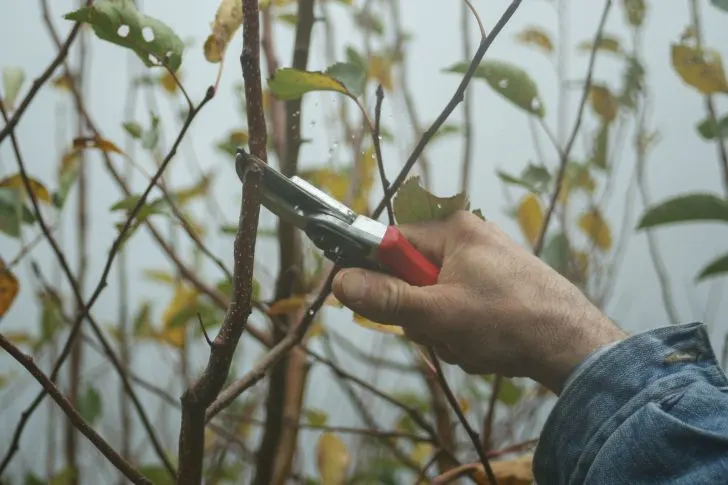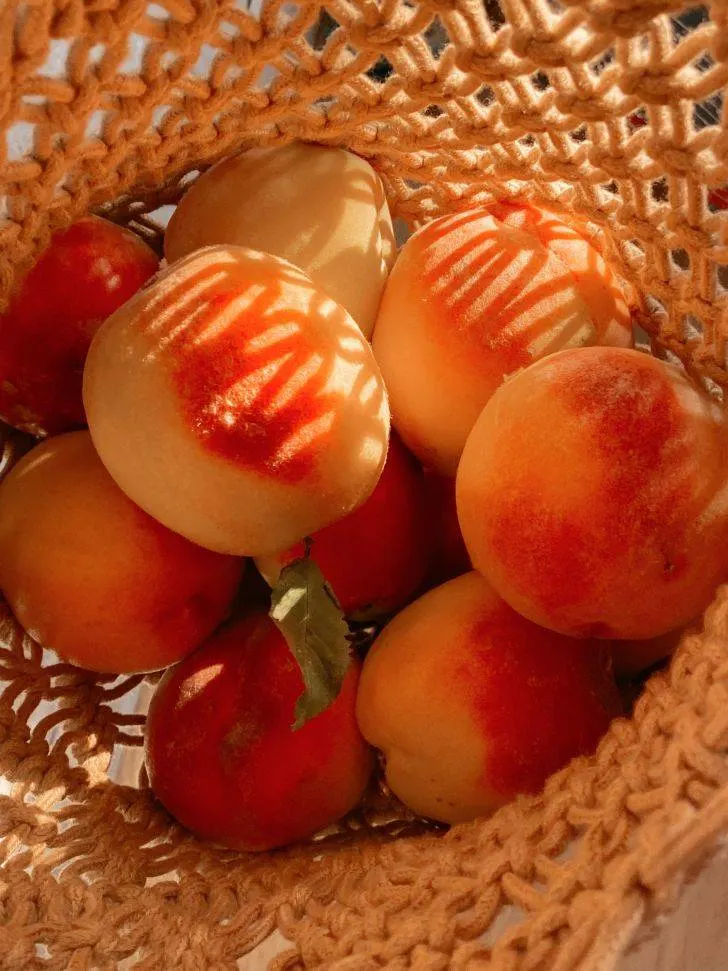Peach trees, with their elegant and fragile blossoms and sweet, juicy fruits, have always been a mark of hope, renewal, and beauty.
Each year, as the winter cold gives way to the warmth of spring, these deciduous trees come alive with a stunning display of pink or white flowers, capturing the hearts and imaginations of gardeners and nature enthusiasts alike.
Therefore, this spectacular event is eagerly awaited as it marks the transition from winter to spring, filling orchards and gardens with delicate, fragrant blossoms.
That’s why a question is frequently asked in the gardening world: When do peach trees bloom?
In this article, we’ll delve into the mesmerizing world of peach trees, exploring when do peach trees bloom, the environmental cues that motion the start of this enchanting seasonal event, and offer valuable insights for those looking to cultivate these alluring trees in their gardens.
Let’s begin!

When Do Peach Trees Bloom? | The Answer!
The exact answer to the question is early spring, typically between late February and early April, depending on the climate and specific cultivar.
After that, the fruit is produced that ripens in late summer or early fall.
The exact timing of peach tree blooming can vary due to factors such as:
- Geographical Location
- Pruning
- Weather Conditions
- Chill Hours
- Tree’s Overall Health
We’ll look at all these factors in detail further in the article.
Peach Tree Flowering Time!
After planting a peach plant, it takes three to four years before bearing fruit.
This process heavily depends upon weather conditions, the type and variety of the tree, and the chilling hours.
The tree blossoms in early spring producing flowers of distinct colors ranging from pale pink to vibrant pink and, in some cases, white. The exact shade of the flowers can vary depending on the specific peach tree cultivar, with some varieties having lighter or darker hues.
The delicate, fragrant blossoms create a stunning visual display during the early spring when the trees are in full bloom.
The flowering time is crucial for successful pollination and fruit production, making it essential to understand when peach trees are likely to bloom.
5 Important Factors Affecting Peach Tree Blooming Process!
The following are some factors that significantly affect the blooming of peach trees.
Sticking closely to the given instructions and taking care of crucial things will make your peach trees blossom perfectly.
1. Chilling Hours and Required Temperatures
When winter arrives, the peach trees tend to go dormant.
That happens because they rest during this period and prepare to bear fruit in the late spring.
There are several different varieties, one of them being ‘low-chill peach varieties,’ which only require temperature below 45°F at night and should not be more than 60°F in the daytime for up to two-fifty hours (250hrs).
There are sub-varieties of low-chill peaches like Eva’s pride, mid pride, and red baron.
Another variety of peach trees is ‘high-chill,’ which demands more than five hundred hours of chill time.
If these necessary requirements are not met, the result will be a premature blossom that will freeze upon the occurrence of winter frost.
So, it can be concluded that the best zones to grow peaches is six and seven, so cold resistance could be the least of your worries.
2. Pruning Peach Tree Branches
Pruning is the utmost essential element in the process of a peach tree blooming.
Understanding and then determining which branches to prune is essential in the last few weeks of the fall or even the starting winter months. You need to keep an eye out for branches that are weak, broken, or on the verge of breaking.
That is because they do not blossom but take up most of the moisture and nutrients from the tree.
Furthermore, look out for limbs that appear dark and diseased. Cut out the old limbs that block out the new limbs, as they will face difficulty in getting direct sunlight.
This method will also promote new growth and will prove to be beneficial for the plant.
A hand saw or a pole pruner could be the perfect tools for this job.

3. Fertilizing the Tree
Fertilizing the tree is a major step toward the blooming process, but understanding when to fertilize it at the right time is the key.
It is advised to fertilize your peach plant when the temperature is cool, which means in the early spring. It is the ideal time for this process because, after the tree blooms, it will be too late.
A low-nitrogen content fertilizer, like the one with a 5-10-10 mark on it, is considered a perfect option as low nitrogen in the fertilizer promotes and encourages bigger blooms instead of the greens.
4. Watering the Roots
Once you see that the flower buds have begun to form, water your tree with lukewarm water.
The buds appear when the weather is cold, but they can bloom until the weather turns warm. So, this technique will help accelerate the blooming process as the water will make the plant warm up from the root area, and you will be able to witness a much faster bloom.
But make sure to use lukewarm water, not hot water, thinking that the soil will help counterbalance the water temperature, as this is a quite common mistake and can harm the plant immensely.
5. USDA Zones and the Right Conditions
Let’s discuss the best USDA hardiness zones to grow peach trees and the lighting and soil conditions.
- Zones: Peaches are not as resilient and strong as apples; instead, they are much more fragile and need a little more care. People can easily plant peach trees in their backyards or gardens if they live in USDA zones from 5 to 9.
- Sunlight: Peach trees can grow well when planted in full sunlight. Even a little shade can also meddle with the process. So, if you want a quicker bloom, select a spot that gets direct light from the sun throughout the day.
- Soil: When it comes to soil, peach trees thrive in loamy and light soil. Since the plant is fragile, so are its roots. Planting these trees in soil that remains wet will make the roots rot immediately.
All these factors will make your peach tree bloom a little faster and ensure a good bloom, but the flowering time will vary according to the weather and the variety of peaches you have chosen to plant.
From Peach Blossom to Fruit!
Following the appearance of peach blossoms, fruit typically develops within four to six weeks. If an excessive number of peaches are growing on a specific branch, it is advisable to prune some, maintaining a 6 to 8-inch distance between each fruit.
Peaches can be harvested from late June through August.
As the fruit’s color transitions from green to yellow, it indicates readiness for harvesting.
Begin picking the fruit located at the top of the tree and on the outer branches, as these tend to ripen earlier than those on the interior. To avoid damaging the fruit, gently twist it from the branch rather than pulling for safe and easy detachment.

That’s all.
Conclusion!
In conclusion, the blooming of peach trees is a fascinating event in the realm of horticulture.
The precise timing of this occurrence depends on numerous factors, such as the specific cultivar, local climate, and geographical location. The main factors still remain the temperature of the zone and the variety of the peach chosen for the plantation; the rest of the factors only encourage a faster bloom.
Generally, peach blossoms emerge between early spring and late April, adorning landscapes with their delicate pink and white petals.
These transient blooms herald the arrival of fruit within four to six weeks, providing both growers and enthusiasts with a delightful outcome.
That was all for today.
Let us know in the comments what you think of today’s article. Also, don’t forget to share it with your friends.
Regards!
